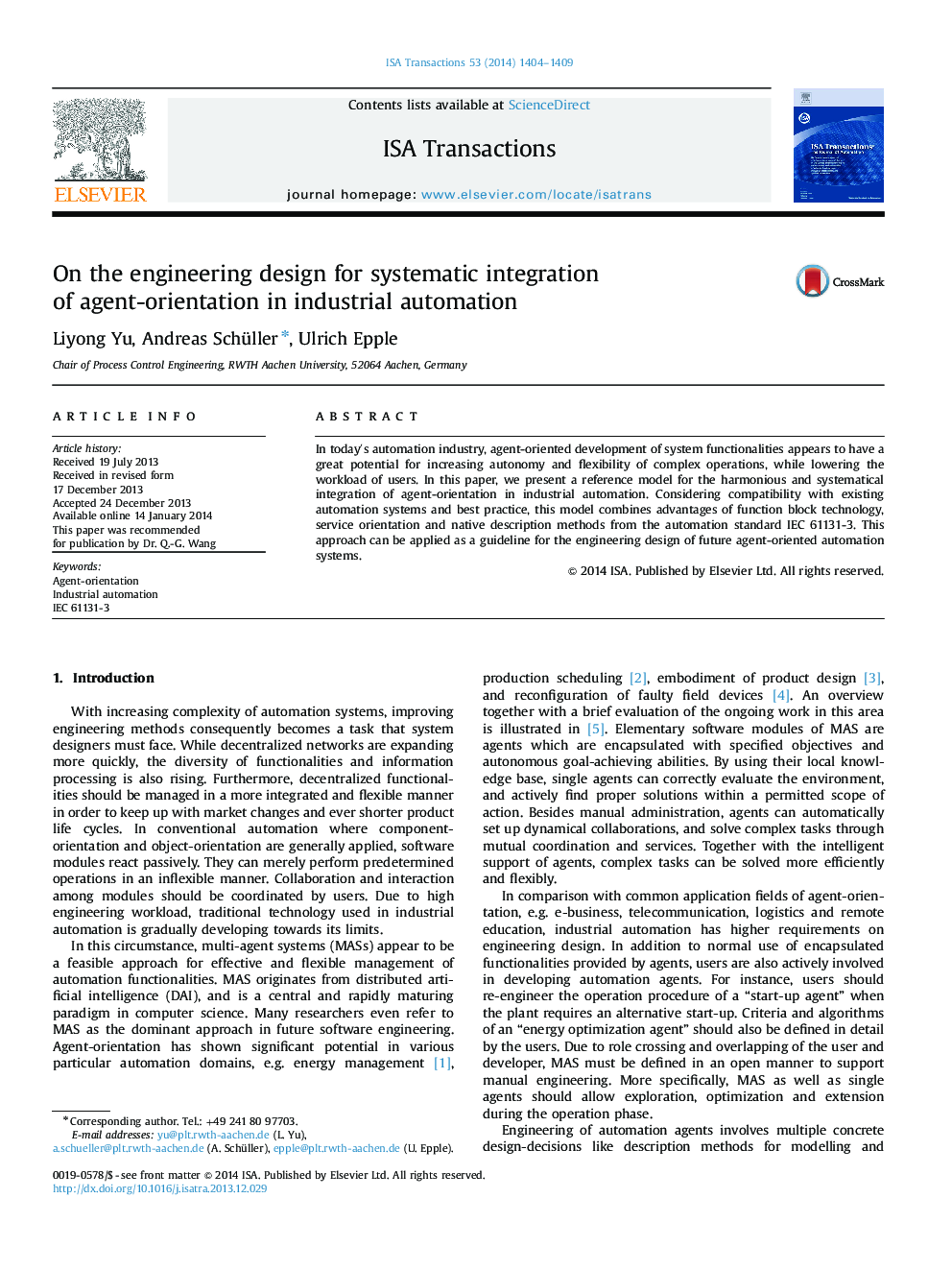| Article ID | Journal | Published Year | Pages | File Type |
|---|---|---|---|---|
| 5004703 | ISA Transactions | 2014 | 6 Pages |
â¢The benefits of applying agent-orientation in industrial automation are discussed.â¢Agents are encapsulated as extended function blocks with generic service interfaces.â¢Internal logic of agents is structured by using description methods from IEC 61131.â¢The realized “white-box” structure supports the (re-)engineering driven by users.â¢The proposed model can be harmonically integrated into existing automation systems.
In today's automation industry, agent-oriented development of system functionalities appears to have a great potential for increasing autonomy and flexibility of complex operations, while lowering the workload of users. In this paper, we present a reference model for the harmonious and systematical integration of agent-orientation in industrial automation. Considering compatibility with existing automation systems and best practice, this model combines advantages of function block technology, service orientation and native description methods from the automation standard IEC 61131-3. This approach can be applied as a guideline for the engineering design of future agent-oriented automation systems.
